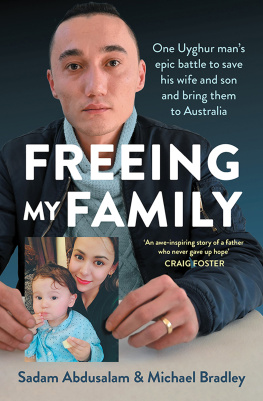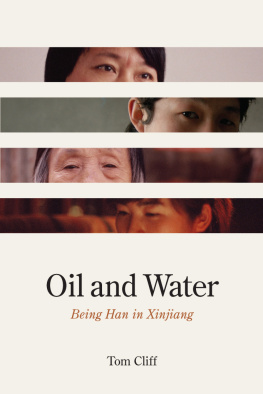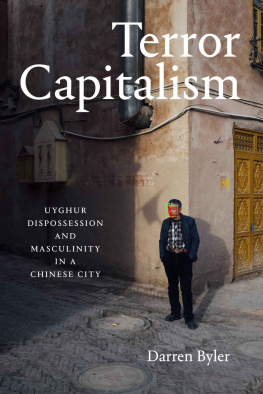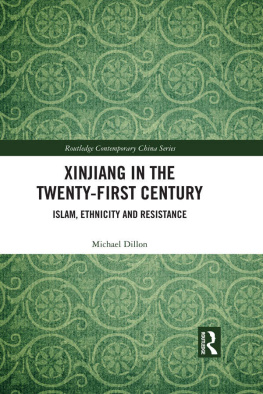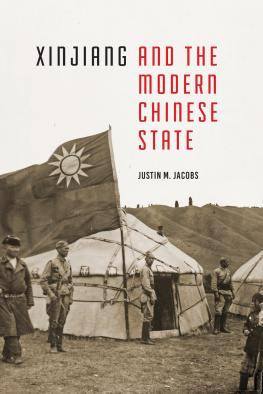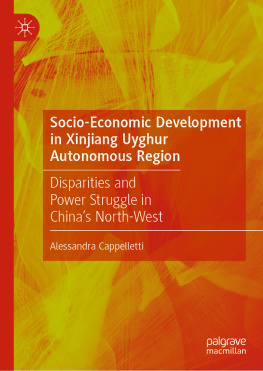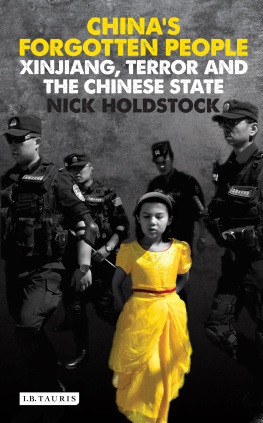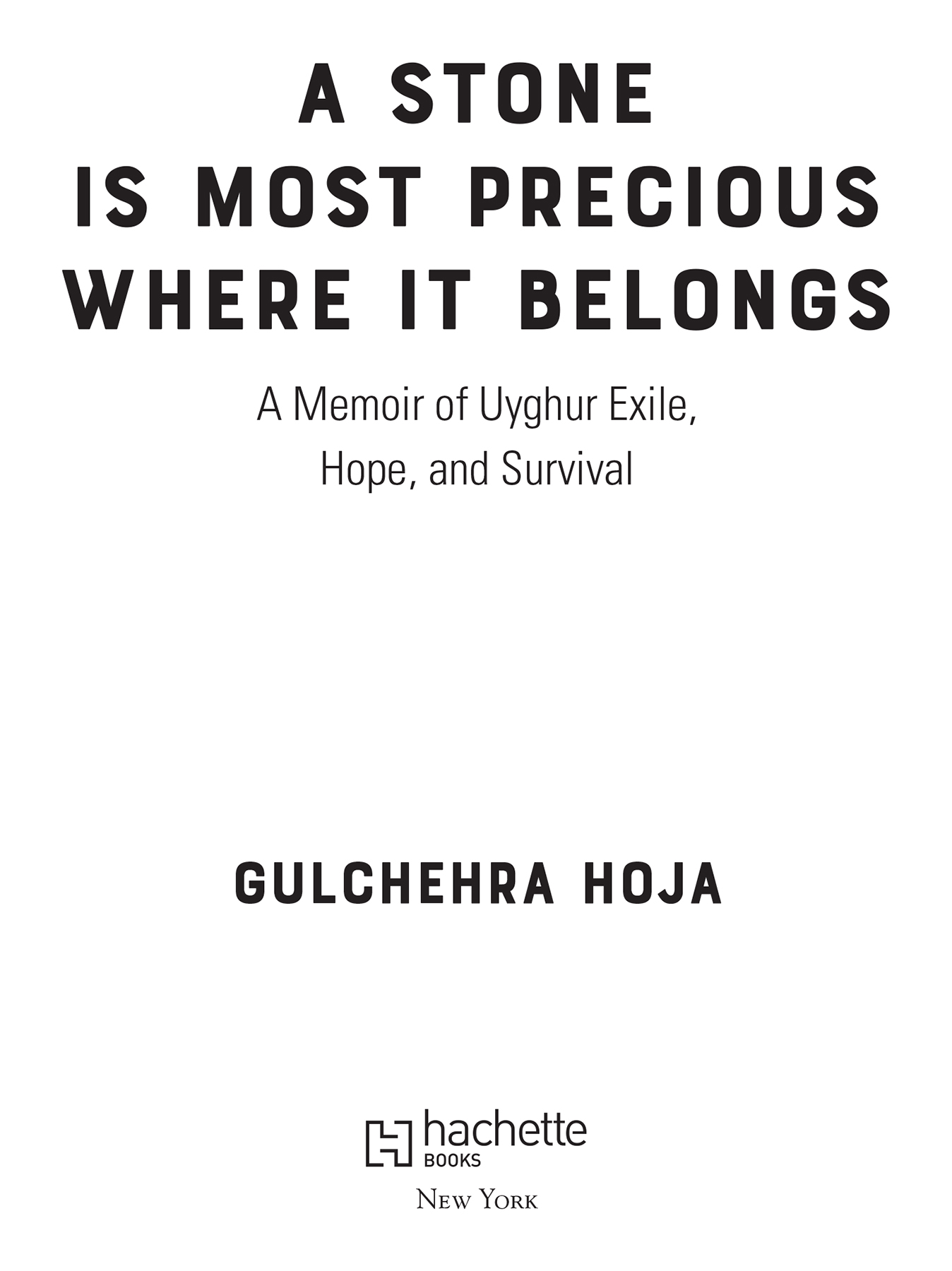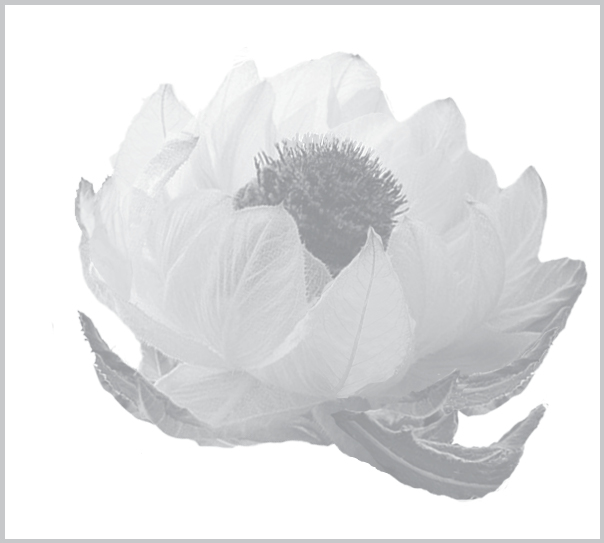
Copyright 2023 by Gulchehra Hoja
Jacket design by Amanda Kain
Jacket copyright 2023 by Hachette Book Group, Inc.
Hachette Book Group supports the right to free expression and the value of copyright. The purpose of copyright is to encourage writers and artists to produce the creative works that enrich our culture.
The scanning, uploading, and distribution of this book without permission is a theft of the authors intellectual property. If you would like permission to use material from the book (other than for review purposes), please contact permissions@hbgusa.com. Thank you for your support of the authors rights.
Hachette Books
Hachette Book Group
1290 Avenue of the Americas
New York, NY 10104
HachetteBooks.com
Twitter.com/HachetteBooks
Instagram.com/HachetteBooks
First Edition: February 2023
Published by Hachette Books, an imprint of Perseus Books, LLC, a subsidiary of Hachette Book Group, Inc. The Hachette Books name and logo is a trademark of the Hachette Book Group.
The Hachette Speakers Bureau provides a wide range of authors for speaking events. To find out more, go to www.hachettespeakersbureau.com or call (866) 376-6591.
The publisher is not responsible for websites (or their content) that are not owned by the publisher.
Library of Congress Control Number: 2022946564
ISBNs: 9780306828843 (hardcover); 9780306828867 (ebook)
E3-20221221-JV-NF-ORI
I dedicate this book to my father, Abdulqeyyum Hoja, who taught me to love myself and my people, my homeland, the world and all of humanity, and most importantly, freedom
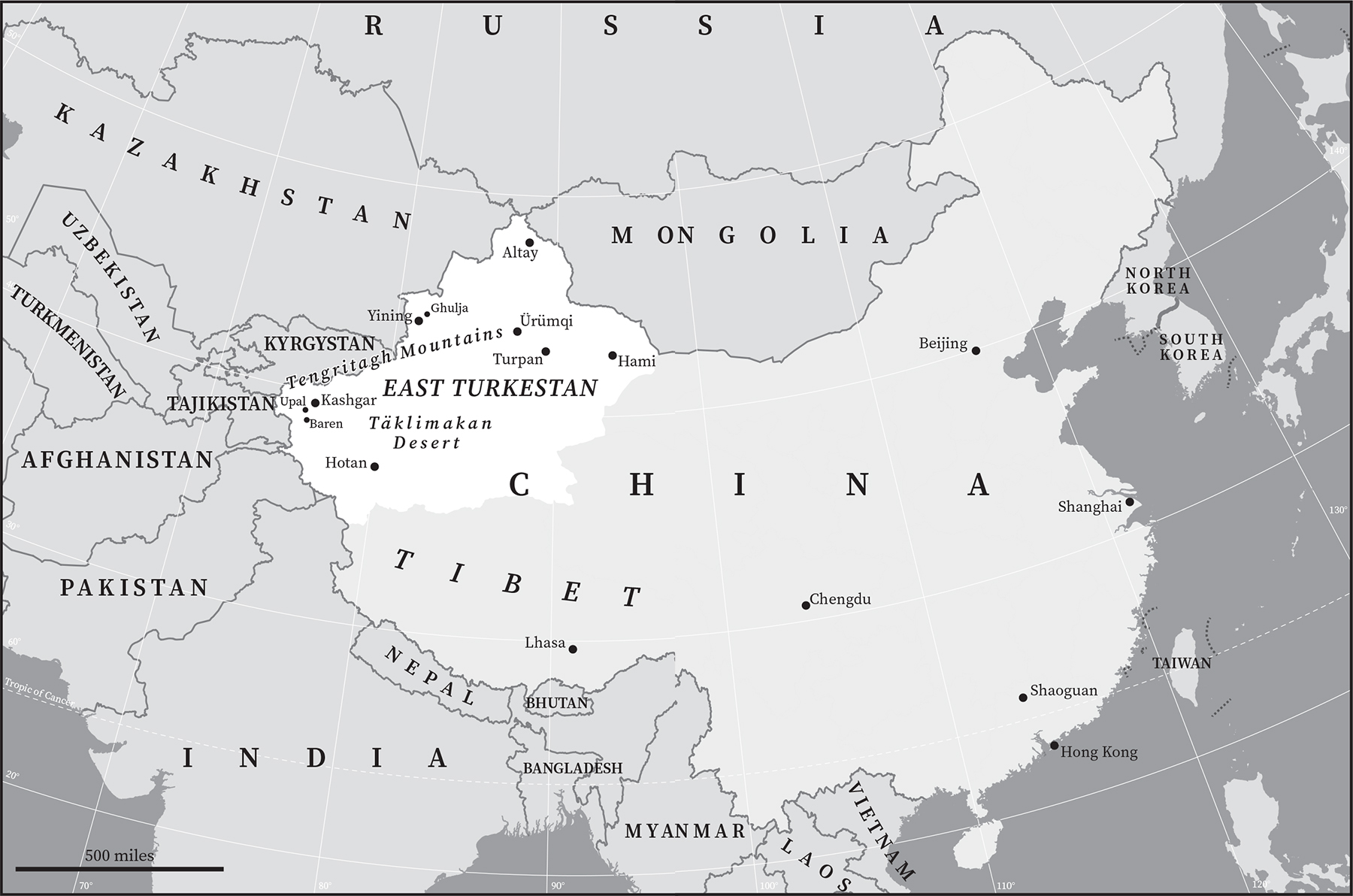
Late in the evening on February 1, 2018, twenty-four members of my extended family were arrested in the course of a single night. Among them were my elderly father and mother, along with aunts, uncles, cousins and their spouses. Although my younger brother wasnt arrested with them, that wasnt because of any kind of luck. The previous year, he had already been detained without cause and had been disappeared into an internment camp.
On that terrible night, two police officers, one Uyghur and one Han Chinese, barged through my mothers front door under cover of darkness. With my brother interned and my father in the ICU after suffering a stroke, she was alone in the house. They slapped handcuffs on her and threw a hood over her head. Because of her high blood pressure (among other serious health issues), the thick black cloth over her face left her fighting for breath. She begged the police officers to take it off.
The Uyghur policeman leaned down close to her. Im sorry. We have to take you like this. Those are our orders. But as he spoke, he lifted the bottom of the hood slightly so her mouth was exposed.
The other policeman noticed what he was doing and said harshly, What, is she your mother or something? He pulled the hood back down tightly over my mothers face and led her to a waiting police car.
She was taken first to the local jail, where she met my elderly aunt, who had also just been detained. By this point my mothers blood pressure was dangerously high. Jail officials examined her, but because the jail didnt have any medical facilities, they wouldnt accept her. So my mother was separated once more from her sister and taken to the rmchi No. 1 Prison, a notorious facility for hardened criminals. Although this prison did have medical facilities, my mother never received any care. When she asked for her blood pressure medication, she was given cough drops. As a professor of pharmacology, she knew the difference.
At the prison, they made her strip off her clothes and change into a dirty uniform, still stinking of the sweat and fear of the last prisoner to wear it. She was thrown into a small room with thirty other women and kept chained to a pipe for days on end. It was just one of many humiliations visited upon her. And she is very far from the only person to undergo such degradations. In the twenty-first century, my beautiful homeland has become the site of terror. The wholesale destruction of the ancient Uyghur culture and way of life has proceeded at an unimaginable pace. My story, and the story of my family, is very much part of that cultural genocide.
The city of rmchi where I grew up is flanked to the west by the breathtaking mountains of the Tengri Tagh and surrounded by vast desert landscapes punctuated with startling green oases filled with grape and melon vines. It is an ancient city situated much closer to Kazakhstan than to Beijing. Long a major trading center on the Silk Road, rmchi is now the bustling capital of an area that has been known to its indigenous inhabitants as East Turkestan since the nineteenth century. The Uyghur people and our ancestors have thrived for thousands of years amid this harsh and spectacular natural beauty, and along the way developed a complex and rich culture of music, dance, architecture, visual arts, language, and a unique form of Islam. Many elements of the culture can be traced back to ancient Turkic and Central Asian influences from which descended our Sufi-inflected musical tradition, the muqam , and many of our local foodsfrom the fragrant flatbreads known as nan to the cumin-spiced skewered kebabs cooked over an open flame.
To the south of rmchi is the great Taklamakan Desert, the second largest shifting sand desert in the world, in whose oases for more than a millennium the Uyghur people have grown millet, wheat, cotton, figs, persimmons, and other small-scale crops using clever underground systems of irrigation known as kariz . Along the edges of that enormous expanse of sand, the Uyghur people and our ancestors have mainly ruled ourselves under various Turkic, primarily Muslim, potentates. Around 1755, the Manchu-led Qing Dynasty invaded the Uyghur areawhich is about the size of the state of Alaska and which today comprises one-sixth of what is now known as the Peoples Republic of Chinaand brought it under the umbrella of imperial China. Local rebellions proliferated and the area increasingly became subject to Chinese military control. It was not named Xinjiang (meaning New Territory) by the Chinese until 1884, while my great-grandparents were alive.
Our cultural memories are long. My father still remembers marching in a parade celebrating East Turkestan when he was seven years old, while his older brother rode on horseback in the local Uyghur cavalry, flying our blue flag with its distinctive star and crescent moon.
Up until 1949, East Turkestan proudly waved its own flag, and came as much within the cultural sphere of the Soviet Union as of the Chinese state. Although it was a majority Uyghur area, with Uyghurs constituting 75 percent of the population until the mid-twentieth century, there was also a sizable population of Kazakhs, Tajiks, Uzbeks, Tatars, and Kirgiz, most of whom follow some form of Islam. It was a delicate balance, one that in the mid-1900s the Chinese government began to systematically destroy.
With the official founding of the Peoples Republic of China in 1949 and the establishment of the Communist Party of China as the government, a new policy with respect to East Turkestan came into effect. Instead of nominally ruling from afar, the young CCP decided that a full-scale occupation was necessary to control the Uyghur area and, just as importantly, the Uyghur people. The 1950s saw a massive movement of Han citizensthe Han being the dominant ethnic group in China, and what people may generally picture when they think of a Chinese personmostly former soldiers, into the northern part of East Turkestan. The government sent them there to farm wild lands as well as to provide an enormous paramilitary presence in the region. These people constituted the Xinjiang Production and Construction Corps, or the bingtuan , and they were there to exploit the land and natural resources as much as possible. Simply put, the situation became one of a colonized people and a colonial overlord, with all the shots called by the communist powers in Beijing. Within a few decades, the ethnically Uyghur population in the region dropped to below 50 percent. A vast and terrifyingly accelerating program of colonization and cultural annihilation had begun.


